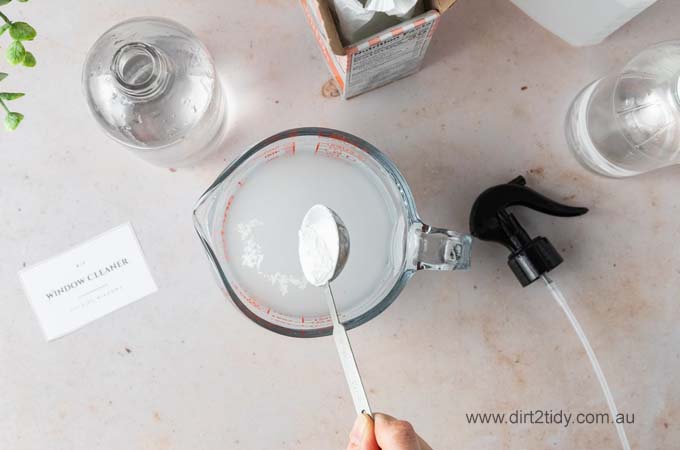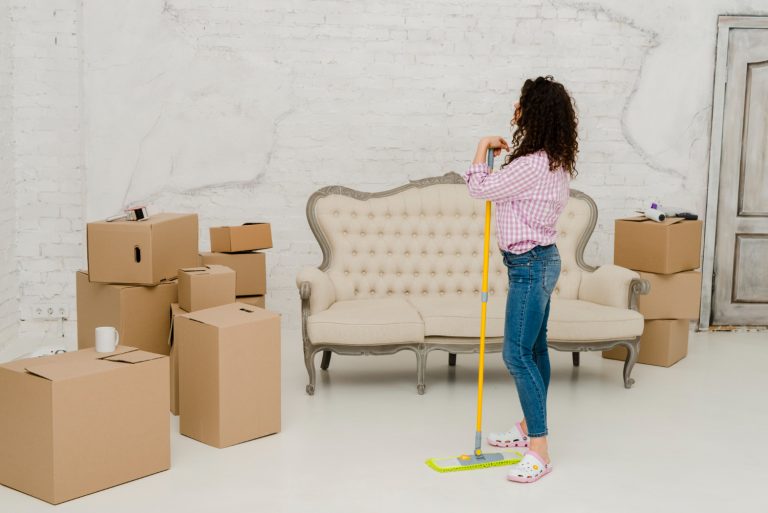Table of Contents
Introduction:
Windows are the eyes of your home, allowing natural light to flood in and offering views of the beautiful Australian outdoors. However, keeping them clean and streak-free can be a challenge, especially with the unique environmental factors present in Australia. This guide will provide you with practical, easy-to-follow window cleaning tips effectively, ensuring they remain crystal clear all year round.

Why Keeping Windows Clean Matters
Beyond simply enhancing the look of your home, clean windows play a vital role in creating a bright and welcoming living space. When free from dust, dirt, and streaks, windows allow maximum sunlight to spill indoors—making rooms feel warmer and more vibrant.
Regular window cleaning also helps extend the life of your glass. Dirt, salt, and environmental buildup can etch or stain the surface over time, leading to permanent damage and costly repairs. By staying on top of this task, you’ll preserve your views, boost your home’s curb appeal, and even reduce the likelihood of scratches and stubborn marks forming.
How to Choose the Right Cleaning Solutions
Choosing the right cleaning solution is the first step to achieving streak-free windows. While many commercial products are available, DIY solutions can be just as effective and more environmentally friendly:
- Vinegar and Water: A classic choice, mixing equal parts white vinegar and water creates a powerful cleaning solution that cuts through grime and leaves windows gleaming.
- Dish Soap and Water: A few drops of dish soap in a bucket of warm water is excellent for removing greasy residues and dirt buildup.
- Alcohol-Based Cleaners: Adding a bit of rubbing alcohol to your vinegar solution can help the cleaner evaporate quickly, reducing the risk of streaks. Always test a small, inconspicuous area first to ensure your chosen solution won’t damage your window frames or seals.
Step-by-Step Guide to Streak-Free Windows
Achieving streak-free windows involves more than just the right cleaner. Follow these steps for the best results:
- Remove Dust and Debris: Before applying any liquid cleaner, dust the windows with a soft brush or vacuum to remove loose dirt.
- Apply the Cleaning Solution: Spray your chosen cleaner generously over the window, ensuring even coverage.
- Wipe Down: Use a microfiber cloth or a squeegee to wipe away the cleaner in a single, continuous motion, starting from the top and working your way down.
- Dry the Edges: Use a dry microfiber cloth to wipe around the edges of the window to catch any remaining drips and prevent streaks.Pay special attention to the corners and edges, as these areas tend to collect more dirt and are more prone to streaking. For best results, avoid using paper towels, which can leave behind lint, and skip soap-based cleaners that may leave a filmy residue. If possible, opt for distilled water in your cleaning solution—tap water often contains minerals that can leave spots or streaks behind. Taking a few extra moments to thoroughly dry and inspect these high-streak zones will help ensure your windows are left sparkling clean and crystal clear.
- Final Buff: Buff the glass with a clean, dry microfiber cloth for a sparkling finish. By following these steps, you can ensure that your windows are not only clean but also free of unsightly streaks.

Tips for Cleaning Window Tracks, Corners, and Edges
When it comes to achieving spotless windows, don’t forget about those often-overlooked areas: tracks, corners, and edges. These tight spots tend to collect dust, grime, and even cobwebs, which can detract from your sparkling glass.
Here are some tried-and-true tips to tackle them:
- Use a Small Brush or Toothbrush: Grab a soft-bristled brush—an old toothbrush works wonders—for scrubbing out dirt from window tracks and the very edges. Gently loosen debris before wiping it away.
- Vacuum for Easy Pickup: After brushing, use your vacuum’s crevice tool to suck up all loosened dirt and dust. This helps prevent spreading grime onto the glass during cleaning.
- Try Cotton Swabs for Tight Corners: Dip cotton swabs in your cleaning solution and use them to reach into the tiniest corners and crevices that cloths can’t access.
- Wipe with a Damp Microfiber Cloth: Finish by running a damp (but not dripping) microfiber cloth along the tracks and edges. Microfiber’s fine fibers lift remaining dust and polish reflective surfaces without leaving streaks.
By paying attention to these often-neglected areas, you’ll ensure every part of your window gleams—not just the glass.
Using Homemade Cleaners for a Sparkling Finish
Homemade cleaners are an excellent alternative to store-bought products, offering a chemical-free way to clean your windows:
- Vinegar Solution: Mix 1 part vinegar with 1 part water. Add a few drops of essential oil for a pleasant scent if desired.
- Baking Soda Paste: For tough grime, create a paste with baking soda and water, apply it to the glass, and gently scrub with a soft cloth before rinsing.
- Cornstarch Cleaner: Combine 1 tablespoon of cornstarch with 2 cups of water and 1/4 cup of vinegar. This mixture can help break down stubborn residues. These solutions are not only effective but also safe for the environment and your health.
You may also like to read about-“Everything You Need to Know About Hiring Window Cleaning Specialists”
The Best Time of Day to Clean Windows
Timing is crucial when cleaning windows to avoid streaks and ensure the best results:
- Avoid Direct Sunlight: Cleaning windows in direct sunlight can cause the cleaning solution to dry too quickly, leading to streaks. Early morning or late afternoon is the ideal time.
- Cool, Cloudy Days: Overcast days are perfect for window cleaning because the cooler temperatures and lack of direct sunlight prevent the cleaner from evaporating too fast. Choosing the right time of day can make a significant difference in the ease and effectiveness of your window cleaning efforts.

Tips for Cleaning Hard-to-Reach Windows
Hard-to-reach windows can be tricky, but with the right tools and techniques, you can get them clean without much hassle:
- Extension Poles: Use a squeegee or microfiber cloth attached to an extension pole to reach high windows safely.
- Ladders: If using a ladder, make sure it’s stable and positioned on even ground. Always maintain three points of contact for safety.
- Magnetic Window Cleaners: These tools allow you to clean both sides of the window simultaneously from the inside, making them ideal for high-rise apartments. For especially difficult or hard-to-reach windows, you may want to consider some of the latest cleaning gadgets. Robotic window cleaners, for example, offer a hands-free solution—great for large windows or areas that are tough to access safely. These devices use intelligent navigation systems and auto-spray features to tackle both interior and exterior glass, and many models come with safety cords for added security. Just be sure to set up your robotic window cleaner according to the manufacturer’s instructions, double-check the cleaning area settings, and regularly clean the pads and sensors to keep it running smoothly.
- No matter which tool you use—magnetic, robotic, or traditional squeegees and microfiber cloths—it’s essential to keep your equipment clean and in good condition. Dirty or worn-out tools can leave streaks, redeposit grime, or even scratch your windows. Always wash or replace cleaning cloths and pads after each use, and inspect your squeegee blades for nicks or wear.
- Taking precautions and using the right equipment will help you clean even the most challenging windows with ease. Taking precautions and using the right equipment will help you clean even the most challenging windows with ease.

How to Avoid Common Window Cleaning Tips Mistakes
Even with the best intentions, it’s easy to make mistakes when cleaning windows. Here’s how to avoid the most common ones:
- Using Dirty Cloths: Always use clean microfiber cloths or squeegees. Dirty tools can leave streaks or redeposit dirt onto the glass.
- Too Much Solution: Less is more when it comes to window cleaner. Over-saturating the glass can lead to drips and streaks.
- Skipping the Frames: Dirty window frames can transfer grime onto your clean glass. Always clean the frames first. Avoiding these mistakes will help you achieve the best possible results with minimal frustration.
You may also like to read about-“The Ultimate Guide to Window Cleaning Services: How Dirt2tidy Can Transform Your Home
When to Replace Your Window Cleaning Tools
It’s important to keep an eye on the condition of your window-cleaning equipment to avoid scratches or streaks. Here’s how to know when it’s time for an upgrade:
- Inspect Your Cloths and Squeegees: If your microfiber cloths are looking grimy, worn out, or have accumulated residue that won’t wash out, it’s time to swap them for fresh ones. Similarly, if the rubber edge of your squeegee feels nicked, cracked, or no longer wipes smoothly, it’s best to replace it.
- Check for Visible Damage: Any cloths or tools showing visible signs of wear, such as fraying, holes, or broken components, won’t perform well and may even scratch your windows.
- Test Performance: If you notice that your tools are leaving behind streaks or lint—despite being clean—this usually means they’ve seen better days.
By regularly assessing and updating your cleaning toolkit, you’ll ensure a streak-free finish and protect your windows for the long run.
Maintaining Clean Windows with Regular Care
Regular maintenance is key to keeping your windows clean year-round:
- Weekly Dusting: Dust windows and frames weekly to prevent dirt buildup.
- Monthly Wipe-Down: Use a damp cloth to wipe down windows monthly to remove smudges and maintain clarity.
- Deep Clean Seasonally: Perform a deep clean of all windows at least once each season, or more often if you live in an area with high dust or pollution levels. Consistent care will keep your windows looking their best and reduce the time needed for deep cleaning sessions.
How often you should clean your windows really depends on your environment. If you live in a rainy or dusty area, or if your windows face a main road or a construction site, you’ll likely need to clean them more frequently—every few weeks or so. In less exposed or polluted areas, you might get away with cleaning every couple of months. Adjust your routine to fit your local conditions, and your windows will stay sparkling no matter where you live.
Cleaning and Maintaining Your Window-Cleaning Tools
Proper care for your window-cleaning tools is just as important as cleaning the windows themselves. Giving your equipment a little attention after each use will help it last longer and perform at its best next time:
- Rinse Cloths and Squeegees: After cleaning, thoroughly rinse microfiber cloths, squeegee blades, and scrubbers in warm, soapy water to remove any leftover dirt or cleaning solution. Wring them out well and hang to air dry, or toss microfiber cloths into the laundry.
- Inspect for Damage: Check tools for wear and tear. Replace any squeegee blades or cloths that are frayed or have nicks, as damaged tools can cause streaks or even scratch your glass.
- Robotic Cleaner Maintenance: If you use a robotic window cleaner, don’t forget to wash the cleaning pad and gently wipe down the fan and sensors with a soft, dry cloth. Dust or grime on these parts can reduce cleaning efficiency and put your windows at risk.
By regularly cleaning and checking your window-cleaning equipment, you’ll ensure that every cleaning session is safe, effective, and streak-free.
The Benefits of Using Microfiber Cloths
Microfiber cloths are a must-have for window cleaning, offering several benefits over traditional cleaning rags:
- Highly Absorbent: Microfiber cloths absorb water and cleaning solution efficiently, reducing the chance of streaks.
- Gentle on Glass: These cloths are soft and won’t scratch or damage delicate surfaces like glass.
Reusable and Durable: Microfiber cloths can be washed and reused many times, making them an eco-friendly and cost-effective choice. Incorporating microfiber cloths into your cleaning routine will help you achieve a flawless finish every time.







